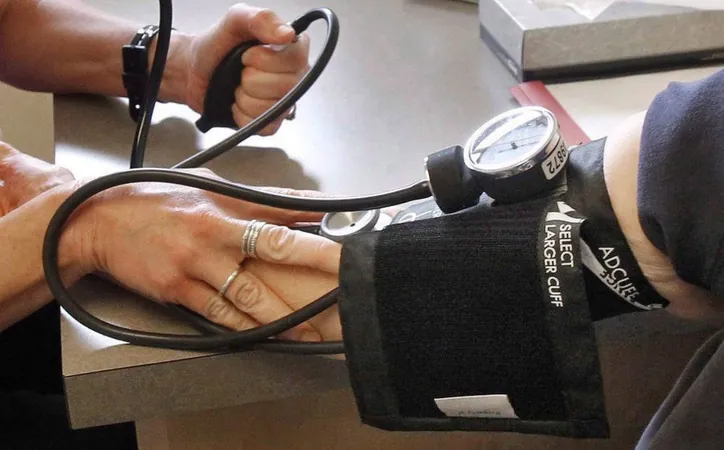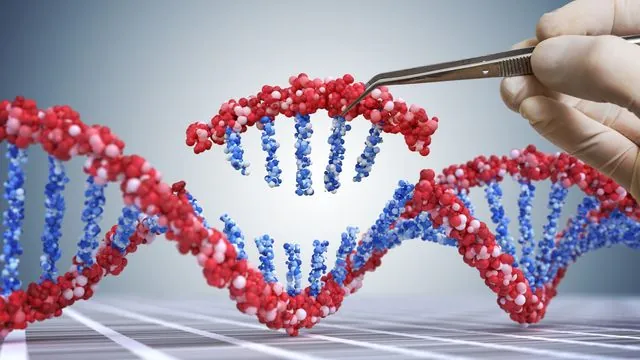
Revolutionary Tech Combines AI and Wearables for Safer Stroke Recovery!
2025-04-12
Author: Amelia
AI Meets Wearable Technology to Transform Stroke Rehabilitation
Imagine a world where recovering from a stroke becomes not only safer but smarter! A groundbreaking study by researchers, including a team from Simon Fraser University in British Columbia, reveals that artificial intelligence (AI) paired with wearable tech could dramatically enhance safety for stroke survivors.
Pioneering Research on Mobility Monitoring
Gustavo Balbinot, an assistant professor specializing in neurorehabilitation, states that this innovative research paves the way for new technologies tailored for stroke recovery. However, the implications extend beyond just stroke victims. The findings could also benefit those at risk of falls due to balance issues from other conditions such as vertigo or spinal injuries.
Sensing Success: Monitoring Movement Patterns
In the study, published in the esteemed journal Clinical Rehabilitation, researchers monitored over 50 stroke survivors during mobility tasks using advanced sensors. By analyzing this data, they were able to identify unique movement patterns. Balbinot likens their findings to throwing a rock into a river, where the resulting waves represent the frequencies of movement.
Spotting the Differences: Cautious vs. Jerky Movements
What they discovered was intriguing: stroke survivors tended to exhibit smoother, more deliberate movements when compared to a control group of healthy participants, who displayed faster, more erratic motions.
Game-Changing Software for Monitoring Falls
Balbinot and his team have developed a software that breaks down these movement patterns into three-second intervals. This allows for real-time detection of changes that could signal a fall risk—an alarming concern for those in recovery. "The software is the magic here," Balbinot emphasizes, showcasing its ability to assess movement stability every three seconds.
Smart Alerts to Prevent Falls: A Must for Recovery!
If the software detects risky movements, users receive instant alerts advising them to be cautious. As Balbinot suggests, "People may engage in dangerous movements without realizing it, leading to potential falls." These real-time notifications encourage users to slow down and evaluate their actions.
Learning and Adapting: Smarter Tech for Individual Needs
The predictive capabilities of the software grow stronger as it collects more data. According to Balbinot, "The algorithm learns from the user." With machine learning, it can tailor advice specific to each person's recovery journey.
Future of Rehabilitation: Wearables in Clothing?
The sensors used in this study monitor critical aspects such as speed and orientation. Remarkably, technology has advanced to the point where these tools could even be incorporated into everyday clothing.
Empowering Clinicians with Data for Better Care
The study emphasizes that clinicians could gain immense benefits from accessible, easy-to-interpret mobility data, which can enhance decision-making in patient care. The integration of machine learning algorithms could facilitate personalized rehabilitation strategies, ensuring that care meets unique patient needs.
Looking Ahead: A Call for Further Research!
To fully realize the potential of these devices, further studies are crucial. Research focusing on the long-term usability of these technologies in clinical settings and their effectiveness across diverse patient populations is needed to bridge the gap in stroke rehabilitation.
This exciting development raises hope for a future where technology empowers recovery and reduces the risk of falls, transforming the landscape of rehabilitation for stroke survivors!









 Brasil (PT)
Brasil (PT)
 Canada (EN)
Canada (EN)
 Chile (ES)
Chile (ES)
 Česko (CS)
Česko (CS)
 대한민국 (KO)
대한민국 (KO)
 España (ES)
España (ES)
 France (FR)
France (FR)
 Hong Kong (EN)
Hong Kong (EN)
 Italia (IT)
Italia (IT)
 日本 (JA)
日本 (JA)
 Magyarország (HU)
Magyarország (HU)
 Norge (NO)
Norge (NO)
 Polska (PL)
Polska (PL)
 Schweiz (DE)
Schweiz (DE)
 Singapore (EN)
Singapore (EN)
 Sverige (SV)
Sverige (SV)
 Suomi (FI)
Suomi (FI)
 Türkiye (TR)
Türkiye (TR)
 الإمارات العربية المتحدة (AR)
الإمارات العربية المتحدة (AR)